
Meet Zoom AI Companion, your new AI assistant!
Boost productivity and team collaboration with Zoom AI Companion, available at no additional cost with eligible paid Zoom plans.
We all know that hybrid and remote work models are here to stay. If anything, everyone's constantly trying to refine their work model, providing enough flexibility to achieve business goals in any setting.
Updated on May 30, 2024
Published on May 30, 2024


These models aim to recreate the inner dynamics of the office, providing as much room as possible for communication, collaboration, and efficiency.
With that in mind, we've put together some statistics that paint a picture of the current state of hybrid and remote work.
The work-from-home model, whether fully remote or hybrid, has had a massive impact on every party involved. These key remote work statistics illustrate just how big that impact is.
1. 36% of employees would prefer a fully remote work arrangement with their next employer. (Zoom)
2. As of 2022, 87% of workers considering a job change are interested in hybrid or fully remote positions. (Robert Half)
3. 77% of Gen Z and 75% of millennials who already work a remote or hybrid schedule say they'd consider changing jobs if they were asked to work on-site full time. (Deloitte)
4. 47% of workers who have already changed roles or intend to do so name better work-life balance as one of the reasons. (Owl Labs)
5. As of 2023, only 20% of U.S.-based professionals in the 18 to 64 age range work a remote or hybrid model. (NY Times)
6. In 2022, Owl Labs found that 41% of smaller companies required their employees to return to the office, as opposed to 27% of enterprise companies. (Owl Labs)
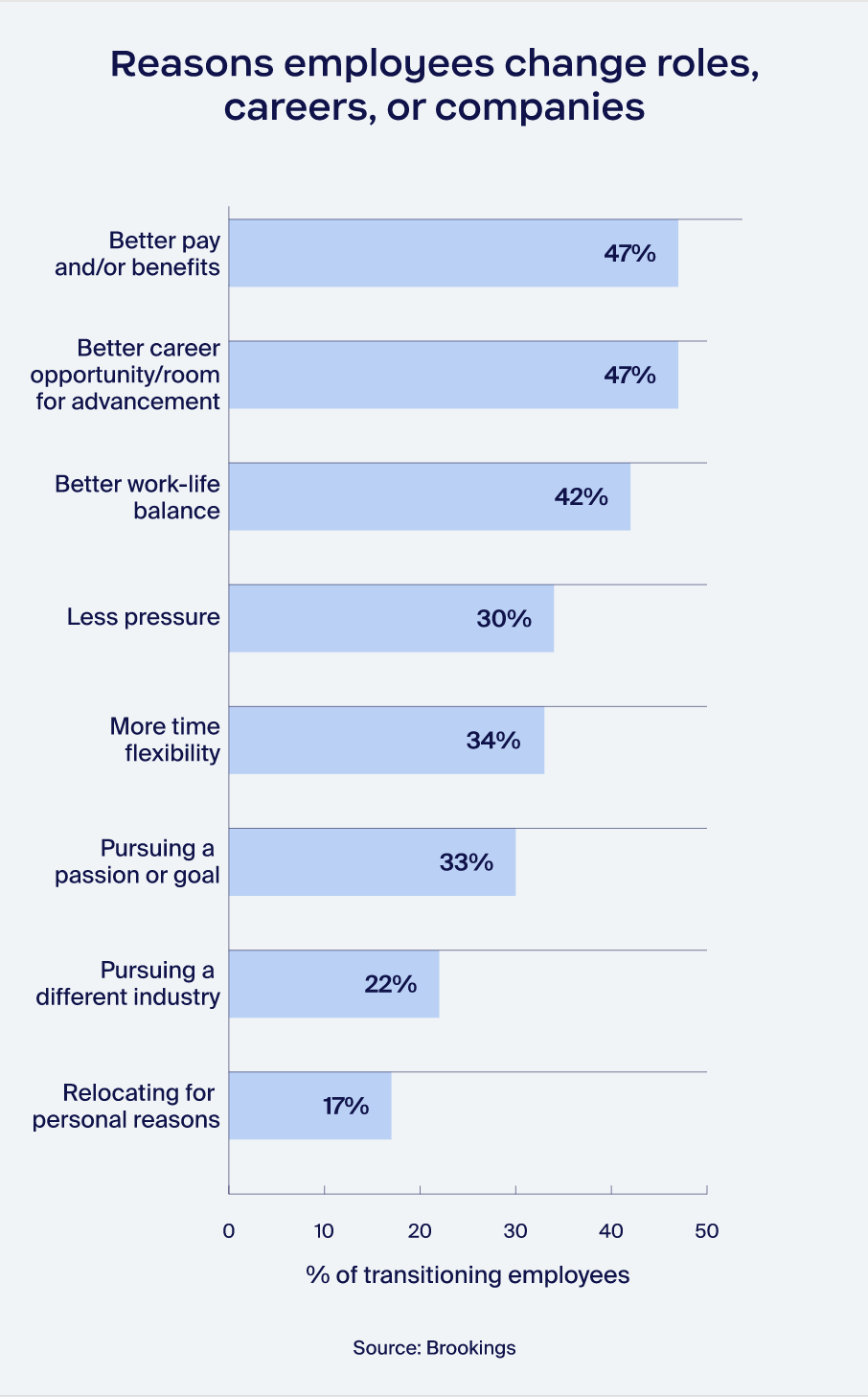
Every industry has different demands, and it can be difficult to accommodate a hybrid or remote work schedule when the business model relies on in-person interaction, but not every role or job in a specific industry requires it. This means, at least for certain departments or individuals, remote or hybrid work options shouldn't be an issue.
7. 34% of professionals in the finance and accounting sectors are looking for a remote work opportunity. (Robert Half)
8. The information industry has the highest work-from-home rate, followed by the finance / insurance and professional / business services sectors. (WFH Research)
9. 11% of lawyers and legal professionals report working a fully remote schedule. (U.S Legal Support)
10. 67% of professionals in the HR industry would like some form of hybrid work. (Boundless HQ)
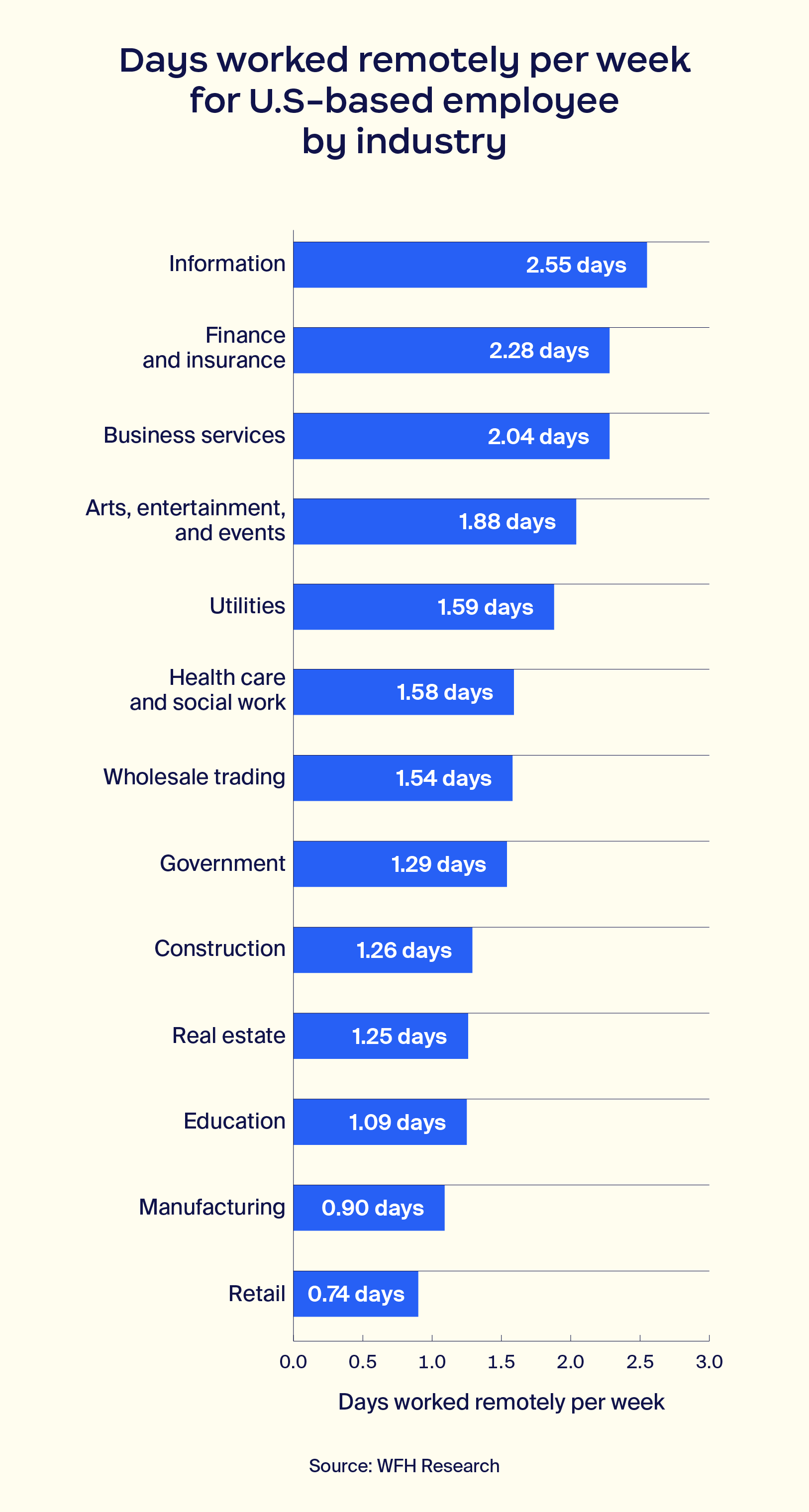
For a long time, every employer's concern was the impact a remote work schedule might have on productivity. And though it was a valid concern in 2019, the flexible work culture has come a long way since then. In fact, the global workforce continues to prove that remote work and productivity go hand in hand.
11. 18% of remote workers say they are 20% more productive than they expected to be before working remotely. (Brookings)
12. 70% of professionals say focused work is easier when remote, with 65% saying managing their stress is easier. (Buffer)
13. 79% of employees working remotely say the shift to a remote schedule has had very little effect on their daily performance. (Quantum Workplace)
14. Companies with fully flexible remote work options between 2020 and 2022 experienced a 21% adjusted growth in revenue, while businesses with required in-office presence policies saw adjusted revenue growth of 5%. (The Flex Report)
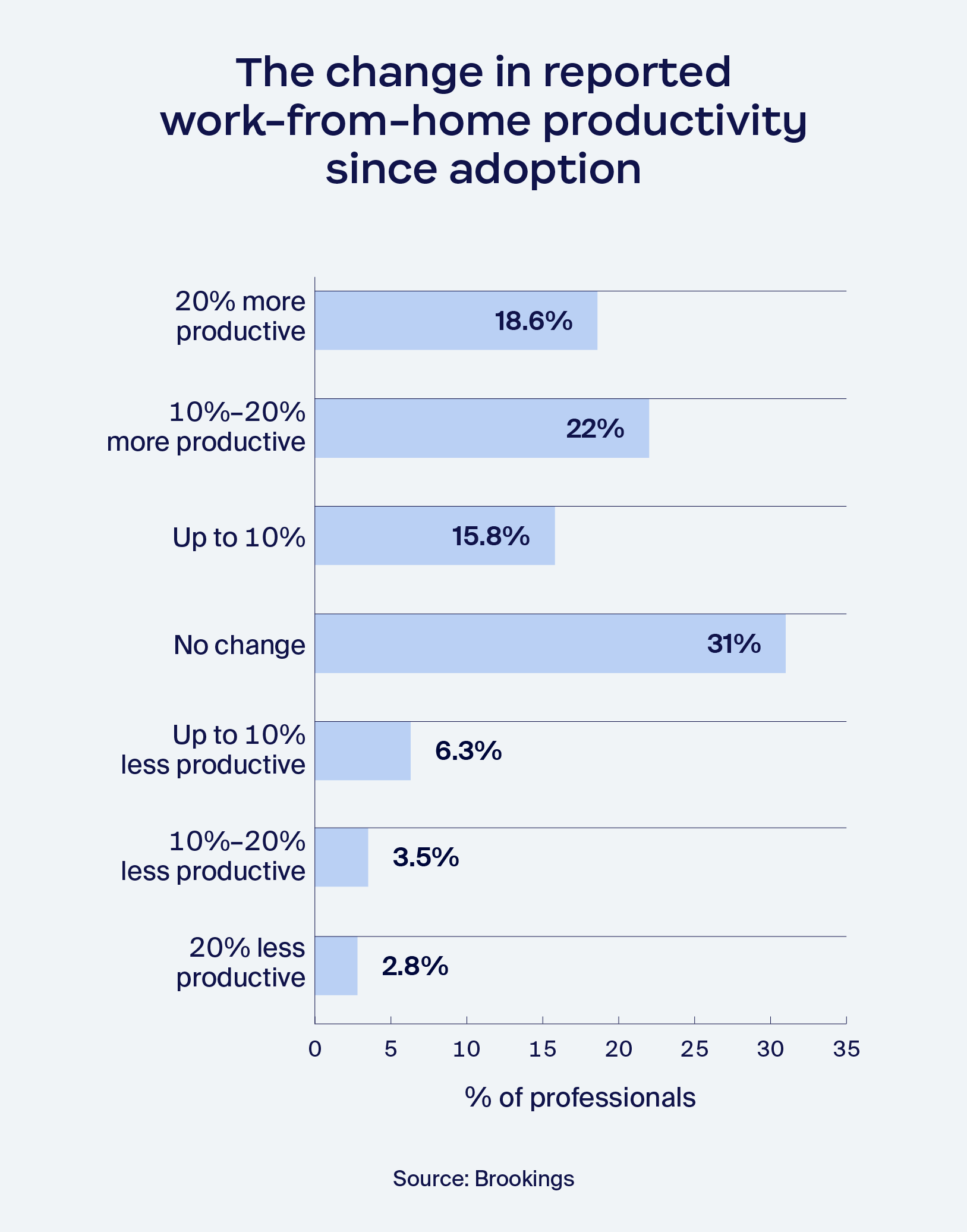
The need for software to enhance or even replace traditional means of communication has risen sharply since 2019. Since then, Zoom and other communication platforms enabling collaboration and teamwork have become the norm. And companies continue to invest in software solutions that provide the functionalities needed to succeed in a remote or hybrid work environment.
15. 75% of employees believe that their organization's current remote work tools and technology require upgrades. (Zoom)
16. 37% of companies upgraded their video meeting tech in 2023. (Owl Labs)
17. As of 2023, the U.S. market for technologies and products that enable remote work has grown four times since 2019. (WFH Research)
18. 83% of employees say good technology plays an important role in their work. (Owl Labs)
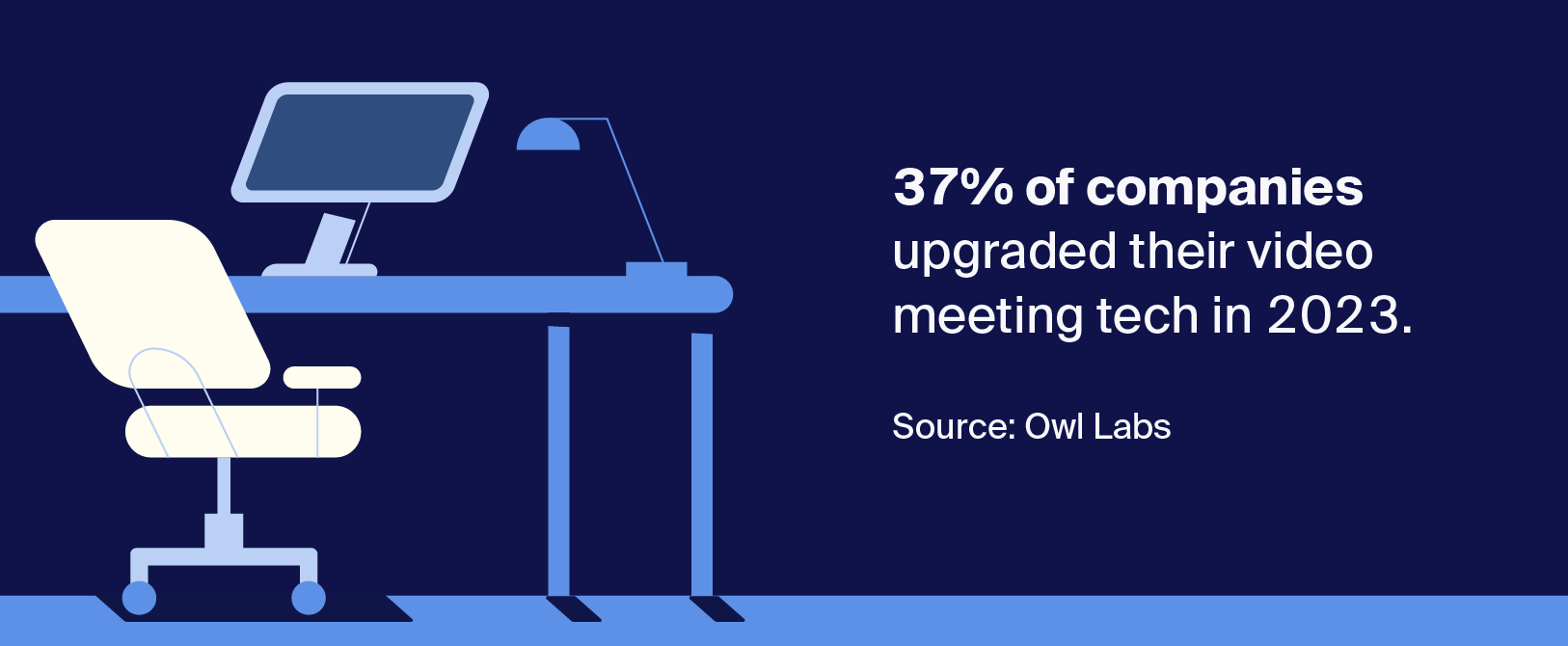
Employee expectations look very different than they did pre-pandemic. These days, more professionals favor jobs that offer remote or hybrid schedules. Catering to the workforce’s preferences goes a long way in recruitment, business appeal, and overall employee satisfaction.
19. 50% of business leaders report a substantial increase in workplace flexibility over the past two years and 45% report a slight increase. (Zoom)
20. 25% of workers would take a pay cut of 15% to have flexible working hours or a four-day work week. (Owl Labs)
21. 27% of millennials say working remotely helps them save money. (Deloitte)
22. 94% of professionals say they'd like to continue working remotely at least some of the time for the rest of their careers. (Buffer)
23. Professionals already working remotely are 14% more likely to report being very satisfied with their job than their non-remote counterparts. (SurveyMonkey)
24. 41% of surveyed in-office workers experience burnout symptoms, as compared to 26% of their remote counterparts. (Global Life-Work Survey 2023)
25. Among the 42% of professionals who are planning to start or have already started hunting for a new job in 2024, 31% are doing so in pursuit of a job with more flexibility. (Robert Half)
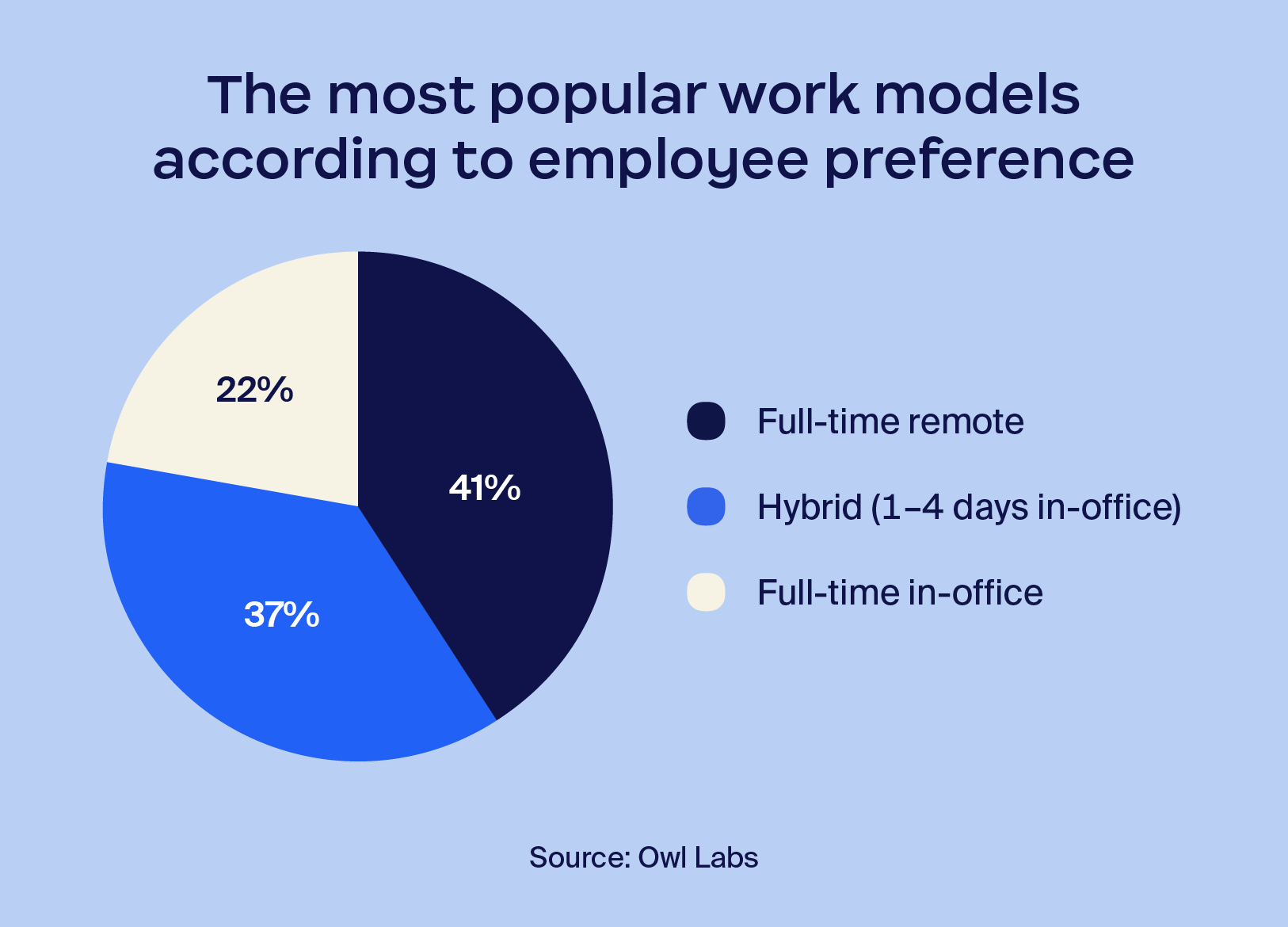
Modern flexible schedules aren't without their challenges. It's not easy building a virtual structure that replaces everything the office can be. First of all, your team will need some training on how to best communicate and collaborate. You'll also need to find software solutions that enable your teams to work together just as efficiently.
In recent years, working from home has become a cornerstone of modern business, with companies finding their own pace, processes, and communication channels.
The right collaboration platforms and tools can help you overcome the challenge of making existing processes remote-compatible and enabling efficient communication across the board. Platforms like Zoom Workplace can help you build the foundation of your collaboration ecosystem with a versatile solution designed to enable effective communication and collaboration.
Learn how Zoom Workplace’s collaboration features can enable your team to accomplish current and future goals today.